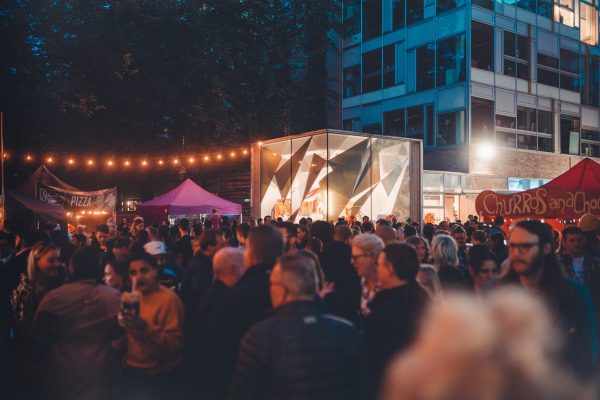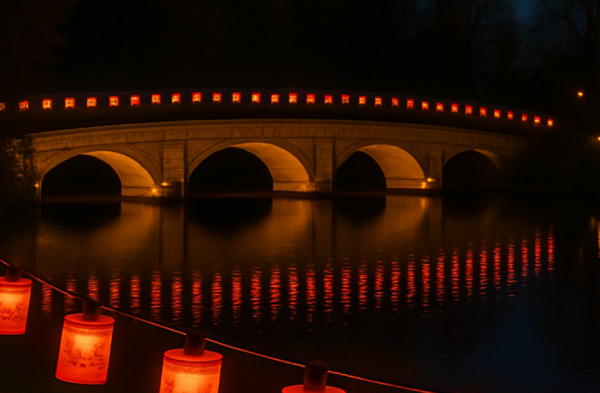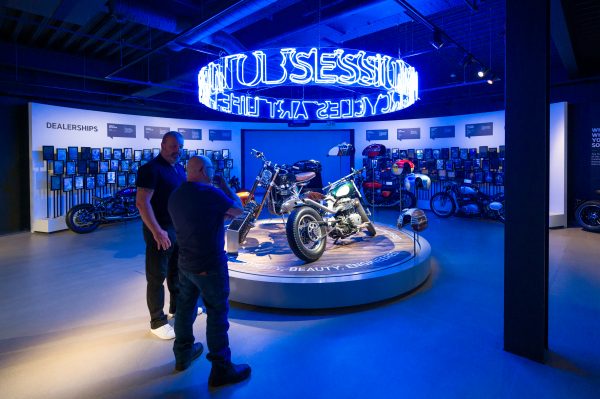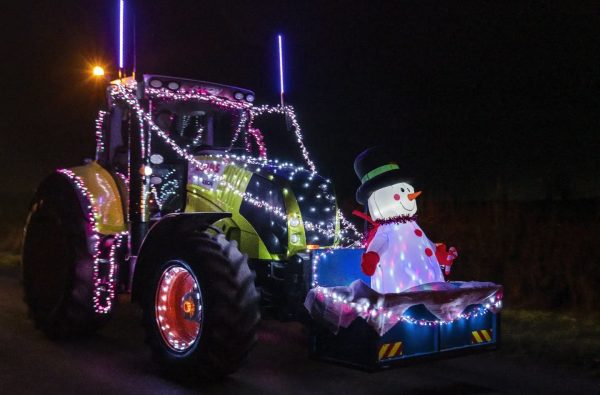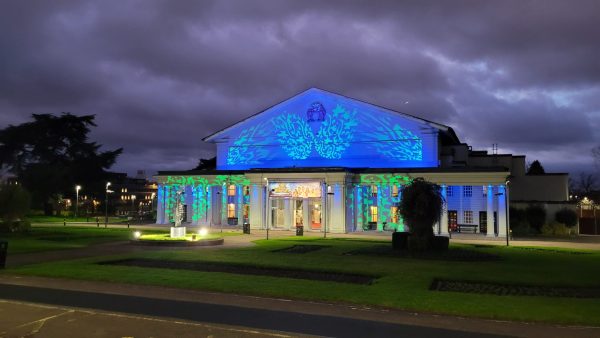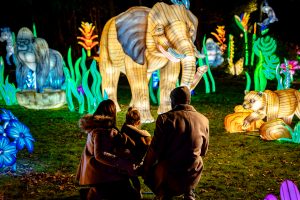Leicester inventions and firsts
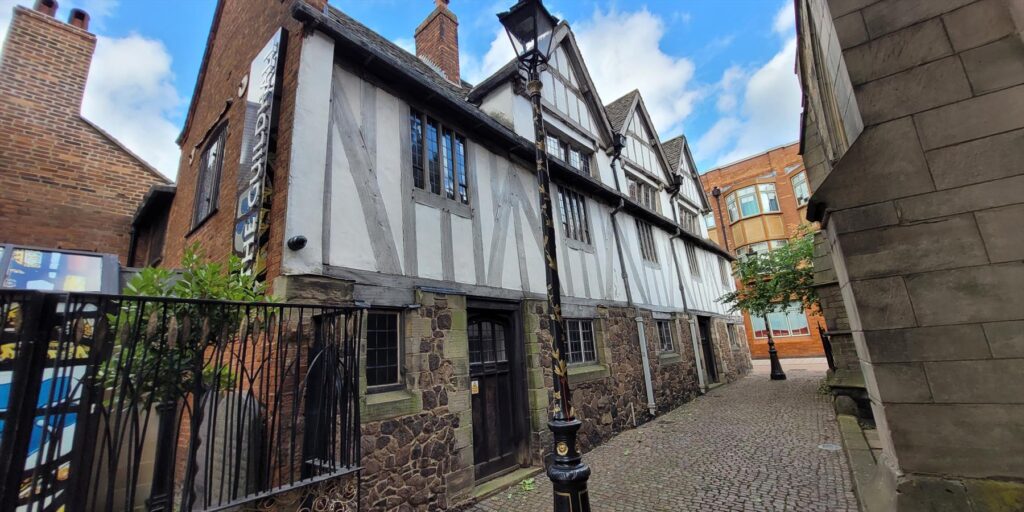
We all know that the people here in Leicester are clever, but did you know that there are loads of ‘firsts’ here in the city and county? Either inventions which were made here, or famous things that were made here. Obviously we all know about Walkers Crisps (best in the land) and Richard III, but what else has been made, invented or done here first? Read on and find out!
Mastermind and Red Noses
Headquarted in Oadby, just outside of Leicester, Invicta Plastics were well known for producing toys, games and other plastics. This one is bound to take many of you back to the heady days of the 70s and 80s as the world famous Mastermind game was made right here in Oadby, winning the Queen’s Award for Export and selling more than a million copies.
Leicester is a hot-bed of comedy excellence thanks to the Leicester Comedy Festival, but it was at Invicta where the Red Noses for Comic Relief were made throughout the 1980s and 1990s. And they paid tribute to this a number of times by hanging a giant red nose from the company HQ in Oadby!
Star Wars, Action Man and Care Bears
The Palitoy Factory in Coalville has near mythic status among collectors of rare toys, as it was here that iconic toys such as Action Man, Care Bears, Play Doh, and Star Wars figures were made. Founded in 1919 by Alfred Pallet, over the years the company also acquired the rights to make Meccano, Airfix and Chad Valley toys.
Today the company is long gone, but its name remains on the lips of Star Wars enthusiasts nationwide, who wished for the latest Luke Skywalker action figure, or the X Wings and Tie Fighters that delighted generations. Some of the action figures now sell for hundreds or even thousands of pounds. There’s even a roundabout on Grange Road in Coalville, which when seen from above takes the form of the iconic Death Star.
The Jet Engine
It changed the history of aviation and was one of the inventions which defined the 20th century. But did you know that the jet engine was perfected by Sir Frank Whittle in Lutterworth? He first started on his ideas in the 1920s, while working for the RAF and continued research at Cambridge. But after filing his patent in 1930 and a number of abortive tests, in 1938 British Thompson-Houston, the company who were hosting the tests, suggested moving to an abandoned foundry they owned in Lutterworth.
With the country on the brink of war, a breakthrough was made in the summer of 1939 and the Air Ministry bought the rights to the engine. While the Battle of Britain was being fought, Lutterworth residents recalled the continuous sound of engine testing – claiming that sometimes, when it stopped in the night, the silence woke them up! Today the thought of intercontinental travel and all the breakthroughs since might not have happened without the hard work and ingenuity of those people of Lutterworth!
The modern golf ball
The golf ball is such an iconic piece of equipment that it’s easy to forget that once these dimpled balls were smooth. It’s the dimpled pattern that allows the ball to fly straight and true, and it was invented by William Taylor here in Leicestershire! Golfing pros at the turn of the century discovered damaged balls went further than new ones so manufacturers started producing balls with fancy patterns.
William Taylor was a golfer and scientist so in the 1930s he took a scientific approach by building a test chamber in which smoke was blown over differently patterned ball surfaces. As a result of this he developed the modern “dimple ball” (a name suggested by his wife), invented a special engraving machine for making the moulds AND a driving machine that would allow him to continue to conduct controlled experiments. Armed with a bucket of golf balls, each with a slightly different pattern, Mr Taylor could often be found in a field near Narborough carefully measuring the distance of flight of each ball as it flew from the device.
Lenses for cinema camera
William Taylor also comes into our next story as it was he who founded a lens-making company with his brother in Leicester in 1886. Taylor-Hobson were responsible for developing the world’s highest quality cinema lenses, lenses which helped to transform the film industry in the early 20th century. By 1939, the company supplied 80% of the lenses used in film studios across the world.
t wasn’t just in cinema they excelled, during WWI Taylor-Hobson developed the “Aviar” lens for photographing from aeroplanes, which gave the allied forces air supremacy. They also developing high quality binoculars, bores for rifles and lenses for range-finders. Today the company’s name is a by-word for optical and measurement perfection and continues to lead the way in precision engineering, continuing William Taylor’s famous mantra “Never waste time in making what other people make. Devise something new that they have not thought of”.
Blu Tack
Famous nationwide for its versatility and stickiness, Blu Tack is the bane of landlords and the love of every kids putting up posters in their room. And it was invented right here in Leicester, at the Bostik factory in Belgrave. It was quite by accident too, as they were trying to make a new sealant, and the byproduct was this sticky goo, which someone started using to put up notices around the factory.
Since its invention in 1969, the recipe has been a closely-guarded secret with none of the factory staff any the wiser. In fact, they’re not even sure exactly who it was who invented it! However, it’s certainly still produced here. By the absolute boatload! Or however it is that you measure Blu Tack. In 2015 it was estimated that around 100 tonnes of Blu Tack was made in Leicester EVERY WEEK!
DNA fingerprinting
This one you might have heard about because it has provided some of the most story-worthy moments of any discovery. In the 1980s Sir Alec Jeffreys was working as a geneticist at the University of Leicester and for the first time it was possible to look at the way genes were made up. While investigating ‘inherited DNA’ he had a Eureka moment and realised that you could ‘fingerprint’ an individual’s DNA.
The applications for criminal investigation, paternity testing and familial identification was apparent. But it was the capturing and identification of the serial killer ‘Colin Pitchfork’ that really put the technology on the map which led to its application by police forces around the world to forensically identify and charge criminals. The technique was later adapted in order to identify the remains of King Richard III using one of his distant ancestors.
Traffic Wardens
You may curse their presence more than praise them, but the first ever Traffic Warden group outside London was established in April 1961 and operated from the police headquarters in Charles Street, not too far from City hall where they are now based! This was due to the increasing problems caused by parked cars in the small city streets (plus ca change, we’re still moaning about parking now!) The group of nine also included the country’s first female traffic wardens!
Walkie Talkies
Donald Lewes Hings was a Canadian inventor, born in Leicester and in 1937 he created a portable radio signalling system for his employer CM&S, which he called a “packset”. These days it’s better known worldwide as the “Walkie-Talkie”.
Foodie firsts
We all know about our local food heroes, both pork pies and Stilton cheese (plus of course Red Leicester) are locally protected foods and of course the best of both come from Melton Mowbray, which is also the origin of the phrase “painting the town red”, inspired by the extravagant antics of the Leicestershire Hunt after a more than exuberant post-hunt session.
Leicestershire is also the home of afternoon tea, the high class luncheon which was first created at Belvoir Castle by the Duchess of Bedford who requested an afternoon snack when she found herself needing a mid-afternoon pick me up. The staff duly obliged by sandwiches, small cakes and tea and a tradition was born!
Our very language
And finally, but no less important, Leicestershire (well, the East Midlands, but we’re claiming it) is the home of Modern English. Pre-medieval England was a mixture of old English, Danish and a little Latin from the church and Lords, but when the warring Saxons and Vikings put aside their differences and helped to shape the country, they also shaped the English we speak today.
With Leicestershire being right on the border of the Danelaw and Mercia, our dialect and the modern English accent were shaped in this crucible of conversation. Middle English set the basis for our modern spelling, sentence structure and pronunciation, and mass migration from the East Midlands to London in the 14th Century meant that the local accent became the dominant national one. The work of Geoffrey Chaucer (who was married in Leicester) became one of the key texts demonstrating this new style of English.
